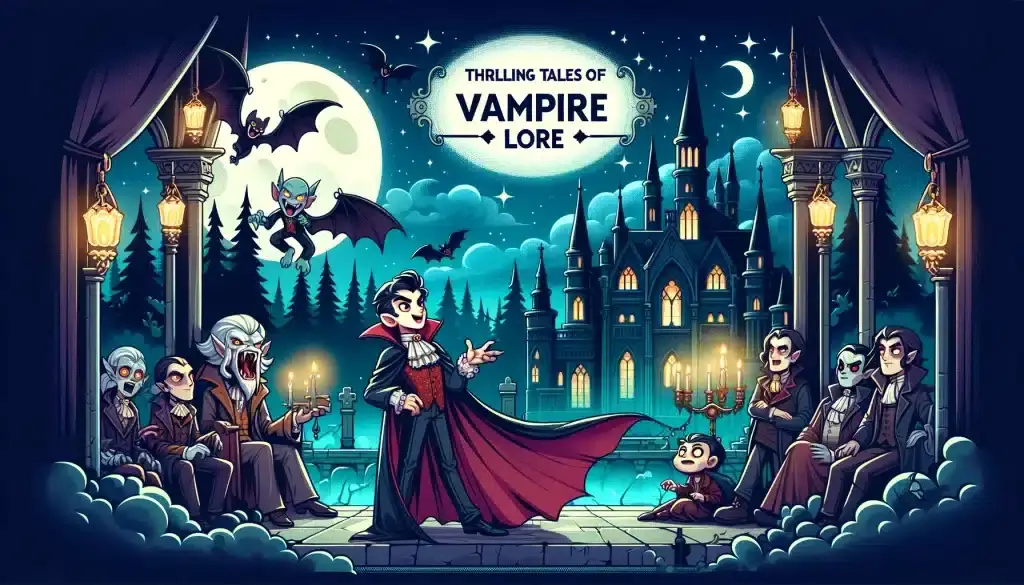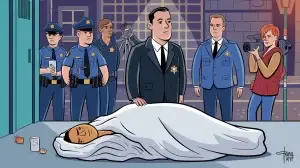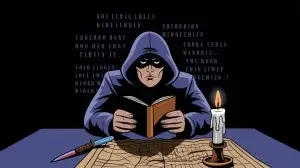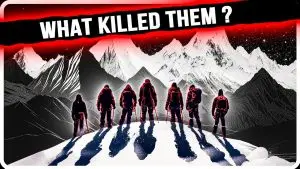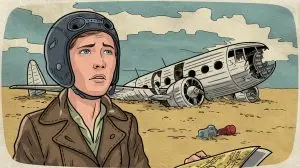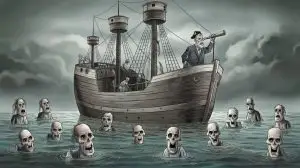Thrilling Tales of Vampire Lore. The allure of the vampire is as timeless as the immortal creatures themselves. From the vampires of ancient folklore, shadowy figures that lurked on the edges of humanity, to the charismatic and complex characters that captivate audiences in modern literature and pop culture, our fascination with these undead beings persists.
This exploration plunges into the origins of vampire lore, tracing its evolution across cultures and millennia. As we delve into famous literary works such as Bram Stoker’s Dracula and Anne Rice’s Lestat, we unearth the impact of these narratives on the vampire genre.
Moving to the contemporary pop culture sphere, we witness the reshaping of our vampire perceptions based on television and cinematic portrayals. Also, a fascinating tour de force into the psychology behind vampire fascination helps answer the question as to why these figures continue to enthral us.
A comparative study of the vampire lore from around the world offers insights into the diversity within the genre, suggesting that our understanding and interpretation of these mythical beings is indeed a global pastime.
Origins of Vampire Lore
Through time immemorial, tales of vampires have gathered momentum, transforming from whispers in the darkness to captivating narratives that have found homes in literature, films, and cultures across the globe. This phenomenon continues to capture imaginations, and the ways in which vampire lore has evolved over the centuries hold irresistible intrigue.
The beginnings of vampire lore are shrouded with mystery, but it’s commonly believed that they originated from folklore in the Eastern European region. According to these early interpretations, vampires were bloated, rufescent figures who roamed the night to feed on the living. They were seen as more of a supernatural pestilence, a far cry from the noble, aristocratic figure we’re familiar with today.
The transformation of the vampire’s image founding a game-changer in the year 1819 when the short story, ‘The Vampyre,’ penned by John William Polidori, was published. Polidori introduced vampires as suave, sophisticated, aristocratic characters and, thus, laid the blueprint for one of the most enduring portrayals of vampire lore.
Consecutively, Bram Stoker’s ‘Dracula’ in 1897 revolutionized vampire lore by presenting this creature in a novel form. The character of Count Dracula portrayed a charismatic villain, capable of supreme evil, which became the pinnacle of vampire legends. Significantly, Stoker’s vampire was not just a mindless bloodthirsty monster; instead, it was marked by intelligence and cunning, opening up new dimensions of fear and fascination.
Moving into the 20th century, the medium of movies played a substantial role in expanding vampire storytelling with films like ‘Nosferatu’ and ‘Dracula.’ The latter movie featuring the iconic Bela Lugosi imprinted the image of the suave, sophisticated Count Dracula in minds across the globe.
The evolution didn’t stop there, though. In the latter part of the 20th to the 21st century, vampires have morphed tremendously across various domains. Influential authors such as Stephen King and Anne Rice painted vivid narratives revolving around vampires, humanizing them for the first time. They merged horror with relatable human emotions, creating sympathetic figures engulfed by their insatiable need for blood.
Further transformations came about on the heels of the ‘Twilight Saga,’ where vampires were cast as romantic leads, still tormenting but with an edge of sparkle. This portrayal added yet another layer to the vampire narrative, bringing forth the concept that even among monsters, love finds a way.
Significantly, television series like ‘Buffy the Vampire Slayer’ and ‘The Vampire Diaries’ ensured that the vampire lore seeped into everyday entertainment, breaking away from its once-a-year Halloween spotlight to taking center stage in prime-time slots. These series presented vampires as multifaceted characters grappling with intense emotions and moral dilemmas, dramatically diverging from the traditional perception of undead creatures.
As time’s wheel continues to turn, Expect vampire lore to further evolve. The essence of vampire mythology rests in its capacity for transformation. The enduring fascination with vampires underscores mankind’s inexhaustible thirst for the paranormal.
As the makeup of society changes, the representation of vampires adapts, utilizing the theatre of the undead to explore humanity’s most pressing fears and deepest desires. Be it the monstrous, the romantic, the heartless, or the grieving vampire, each iteration shines a mirror on the society of its time – a testament to the prevailing cultural currents. Expect many future versions to rise, evolve, and seduce imaginations across the globe.
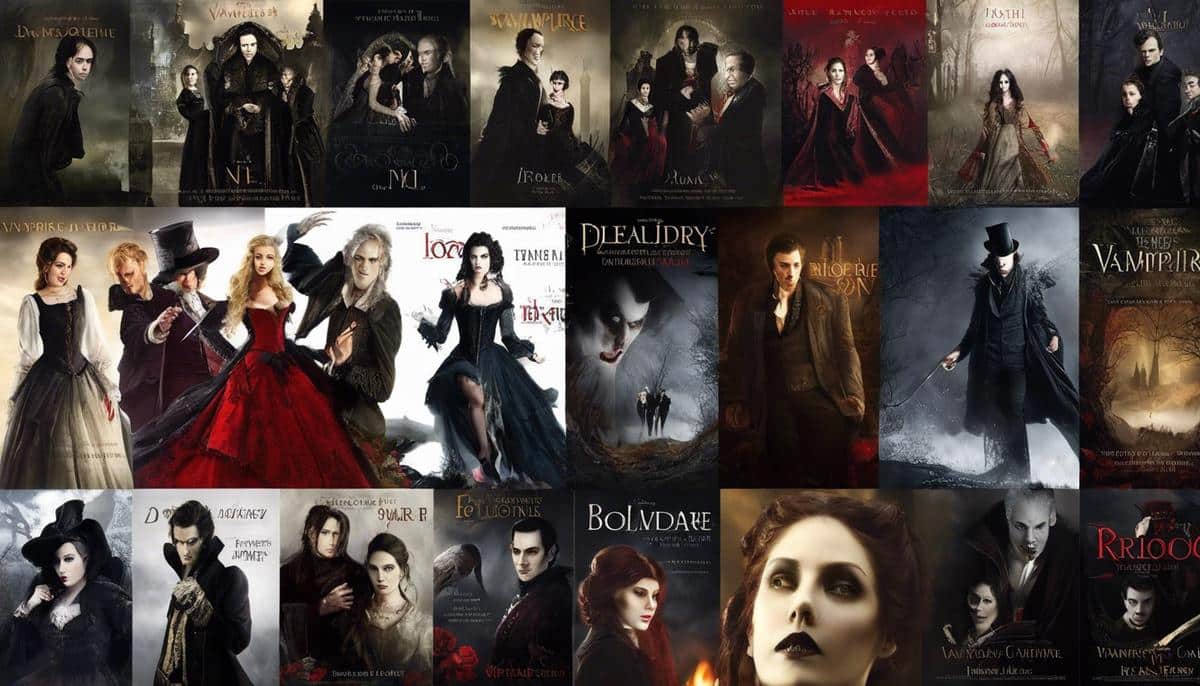
Famous Vampires in Literature
Stepping into the domain of vampire lore
,
it’s clear how deeply embedded these creatures are in our cultural narrative. This lofty foundation can be attributed to literary pieces that have introduced some of the most iconic vampire characters, which have not only promised gripping narratives over the years but also defined the vampire genre.
One may immediately be drawn to Carmilla – the lesbian vampire introduced in J. Sheridan Le Fanu’s 1871 novella. Portrayed as a morally enigmatic character who challenges Victorian ideals on sexuality and gender norms, Carmilla’s narrative is a striking instance of vampire lore encompassing broader themes. The novella implicitly discusses homophobia and misogyny, setting basis for vampire narratives to tackle socio-political issues as well.
In Oscar Wilde’s “The Picture of Dorian Gray” there’s no direct reference to vampires, yet the eponymous cautionary tale of Dorian Gray’s pursuit of eternal youth and beauty echoes several vampiric themes. With his picture ageing and decaying instead of him, Wilde introduces an unruly form of immortality characteristic of vampires, reminding readers of vampire lore intertwined with profound existential discourses.
Going edgier, we witness a more sinister and unnerving vampire in the rather thrillingly twisted tale of “Salem’s Lot” by Stephen King. The character of Kurt Barlow, a relic from the past with old-world charm yet a decidedly monstrous persona, serves as a callback to the original horror associated with vampires, shaking up mainstream contemporary notions of fine-looking, romanticized vampires.
For a more recent manifestation, Charlaine Harris’s series “True Blood” unfolds yet another aspect of vampire culture. The charismatic yet tragic Eric Northman is an exemplar of a modern vampire, wrestling between retaining his humanity and embracing his monstrous nature. His character shows how the vampire genre has evolved to discuss personal identity, blurring the lines between ‘the monstrous’ and ‘the human’.
In “The Vampire Chronicles”, Anne Rice introduces the character of Lestat, depicted not as an outcast but as an influencer, exploring the human fascination with power and immortality. His charming and rebellious persona gave birth to the concept of ‘the rogue’, shaping a new generation of vampires who reject traditional roles and norms.
Upon revisiting these iconic literary figures, their dynamic characters and transformative narratives reveal an enchanting account of how vampire lore has evolved. It’s striking to see how authors have woven intricate plots around these figures, penetrating the surface glamour and horror to delve deeper into regressive societal norms, human nature and morality. More than mere blood-sucking creatures of the night, these iconic vampires stand as a testament to the immense narrative potential and sophisticated symbolism within vampire lore. They suggest an ongoing evolution, promising a future where the allure and mystery of vampires will never fade away. After all, isn’t the appeal of a vampire their enigmatic eternal life?

Vampire Lore in Modern Culture
The adaptation of vampires to the 21st Century is a testament to their enduring appeal and the seemingly insatiable fascination audiences have for these timeless creatures of the night. Part of their appeal emanates from their capacity to adapt with the times, reflecting the changing nature of society and culture. A major contributor to this phenomenon is the role of modern literature and mass media, whose portrayal of vampires have evolved significantly, shaping our perception of these fictional beings in today’s context.
Vampire lore now thrives in the realm of digital media, an illustration of which is the Netflix series “Castlevania.” This animated adaptation of the 1989 video game puts a fresh spin on traditional vampire narratives. Its antagonist, Dracula, has evolved into a multi-dimensional character, driven as much by his extreme emotions as his thirst for blood. This is a clear shift from the depiction of vampires as purely malicious entities, and a nod towards the sophisticated complexities of characters that today’s audiences crave.
Thanks to advancements in special effects and CGI technology, the vampires of the 21st century have become more grotesque and monstrous than ever before. This trend is distinctly illustrated in films like “30 Days of Night.” Here, the vampires are stripped of any romantic or sophisticated imagery, portrayed instead as relentless, animalistic predators necessitating a mental and physical battle for survival, consequently resonating with audiences who crave adrenaline-inducing visual experiences.
The 21st century has also seen vampires venturing beyond their traditional European roots. Explosive hits like “Thirst” from South Korea provide a different cultural perspective on vampires. This Korean masterpiece weaves traditional vampire lore into a thought-provoking narrative revolving around faith, lust, guilt, and self-sacrifice, pushing the boundaries of vampire storytelling in a refreshingly audacious direction. The film encapsulates the ongoing evolution of vampire lore as a vehicle for exploring deeper, universal themes.
Vampire lore’s ability to adapt with technological advancements is illustrated in Guillermo del Toro’s “The Strain”. This series sees a new breed of vampires spreading like a virus with aid of modern transportation and dense urban populations, acknowledging the interconnectedness and vulnerability of our modern world.
Moreover, the vampire genre has responded to societal changes in gender roles and equality. The “Underworld” franchise features a powerful female vampire protagonist, Selene, whose character breaks traditional gender stereotypes, empowering female representation within the genre.
In the 21st century, the themes around vampires have also evolved within comic books and graphic novels. Neil Gaiman’s “The Sandman” series features strikingly unconventional vampires who challenge the old rules, mirroring the societal inclination towards dismantling oppressive norms and promoting individual expression.
In conclusion, the vampire genre has proven itself a mutable narrative form, adapting and evolving in the face of modern digital and societal revolutions of the 21st century. Unlike their immutable immortality, the way they are portrayed continues to shift, retaining the genre’s appeal for generations to come. The vampires of the future promise to continue reflecting and challenging societal norms, pushing creative boundaries, and providing engaging narratives for a perpetually thirsty audience.
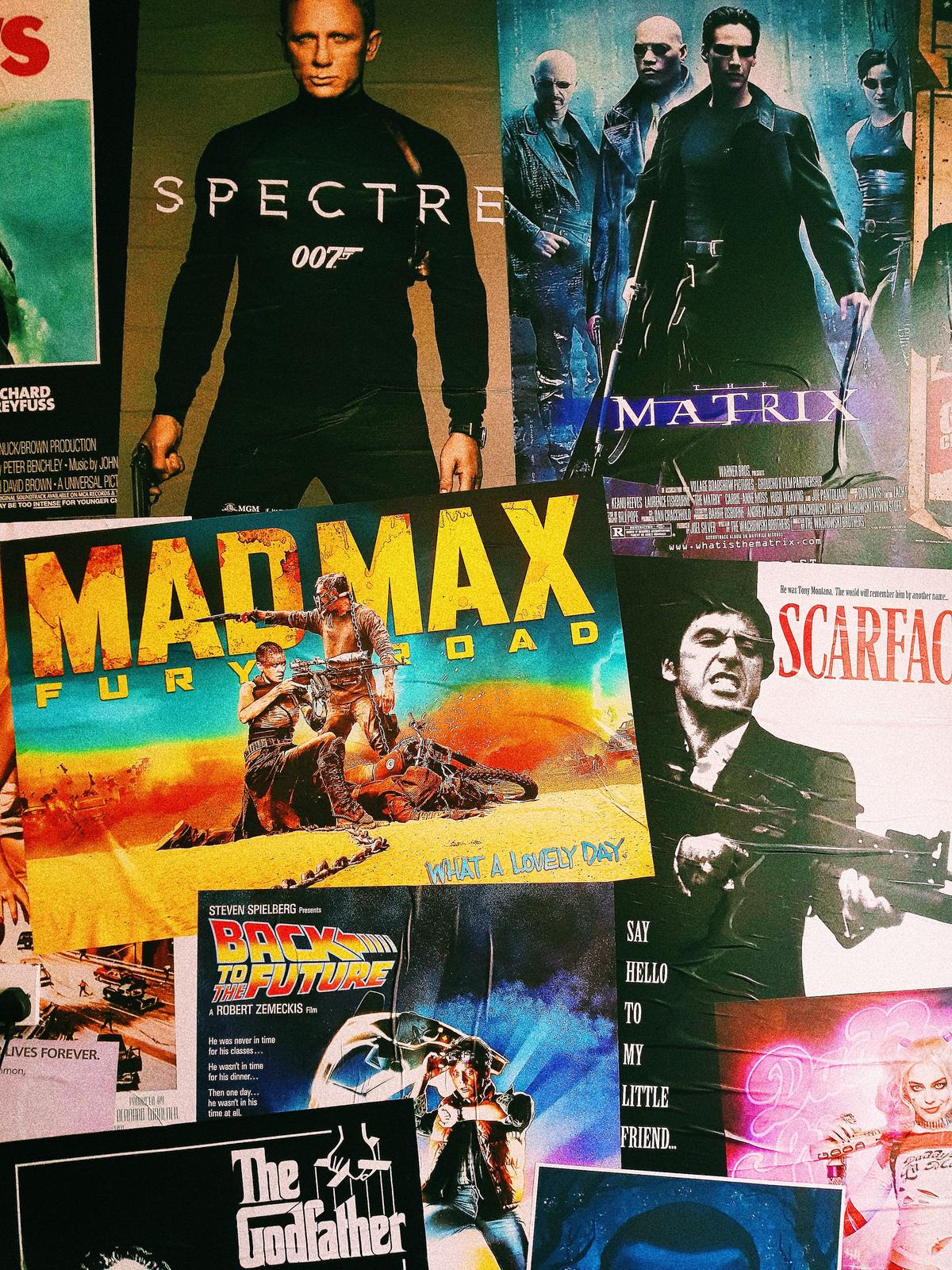
Psychology Behind Vampire Fascination
Expanding into realms of cyberpunk and near-future dystopia, vampire lore continues to evolve in literature.
Works like Justin Cronin’s “The Passage” employ vampire-esque creatures to explore themes of bio-technology and its potential implications.
In a similar vein, Guillermo del Toro’s and Chuck Hogan’s series “The Strain,” delves into a nightmarish invasion of vampiric parasites.
Even the world of children’s literature has been invaded by bloodsuckers with the arrival of the wonderfully quirky “My Sister the Vampire” series.
Western vampire narratives have also left an impression in global pop culture, leading to elaborations on vampire motifs elsewhere.
Take, for instance, “Thirst” from South Korea that injects new life into the vampire genre by exploring spiritual themes and social outcasts, showcasing a different cultural perspective to the traditional western vampire concept.
Vampires in video games are another embodiment of their enduring allure.
The freedom that games provide – to be the vampire and to make moral choices – reinvents our relationship with these creatures.
Titles such as “Vampyr” let you experience the life (or undeath, to be exact) of a vampire, struggling with your conscience as you balance survival with ethics.
Indeed, vampires in video games often tend to represent a metaphor for power and its consequences, an interpretation that’s resonated deeply with players.
Moreover, vampires continue to have a strong presence in comic books and graphic novels.
Neil Gaiman’s “The Sandman” series introduces us to ancient vampire clans within its mythos.
Independent graphic novels like “American Vampire,” featuring distinct American species of vampires, have extended and diversified their ecological niche beyond just humans, encapsulating towards socio-political dimensions of their ceaseless hunger.
Perhaps the most intriguing element of the vampire today is its adaptability.
This creature, steeped in centuries of lore and romanticism, can be tailored to suit any narrative, theme, or era.
From cyberpunk dystopias to post-apocalyptic worlds, from Victorian-era romances to the current conversation on gender equality, vampires are comfortably at home, endlessly echoing and challenging our fears, desires, and societal norms.
Vampires, with their brooding charisma, monstrous potential, and tragically romantic existence, remain captivating.
They have ceaselessly evolved, never failing to reflect time’s heartbeat.
One thing is certain: wherever our culture goes, whatever our society faces in the future, the vampire will be there.
Immortal not only in their fiction, but also in our collective human fascination, they will persist, unfailingly reflecting us in their dark mirror for centuries to come.
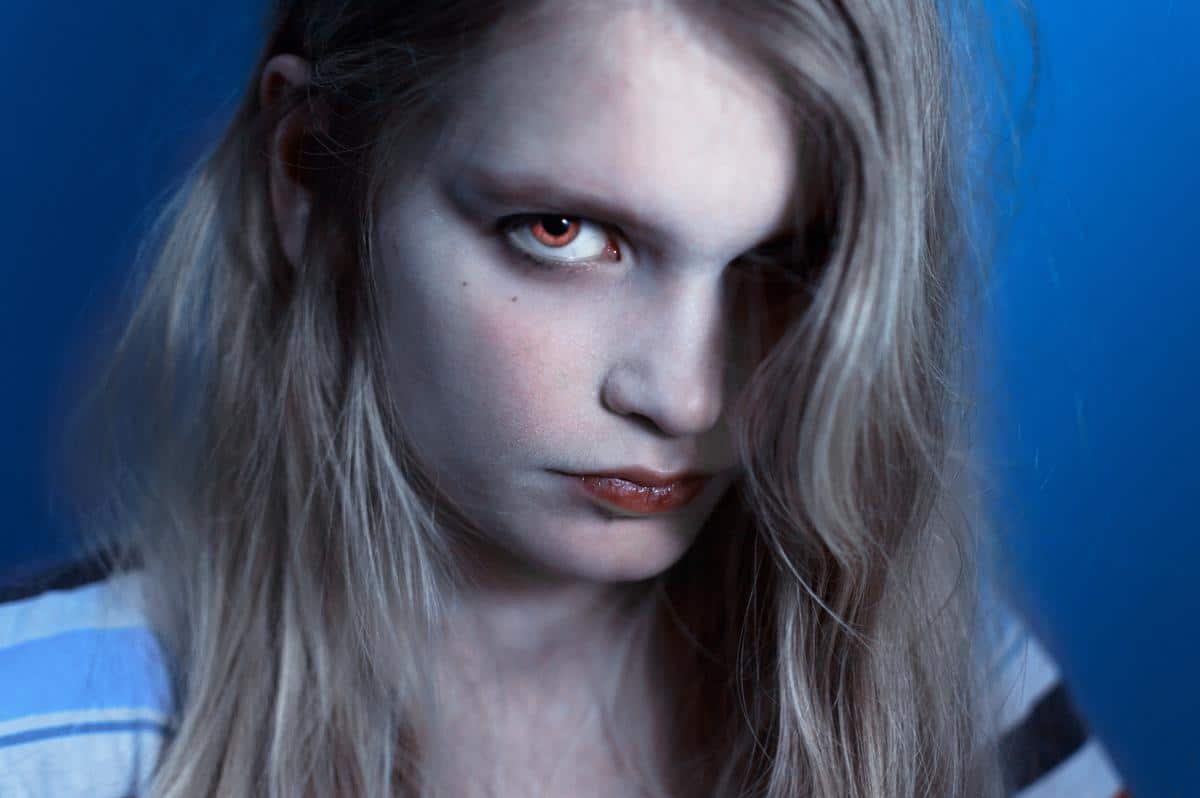
Photo by little_klein on Unsplash
Comparative Study of Vampire Lore
Vampires: the universal embodiment of seduction, power and mystery. As we look to the globe, we encounter different interpretations of this iconic supernatural being. Diverse cultures have enriched vampire lore by adding their own unique perspectives and beliefs.
Delving into the vampire lore across the world, we start with the Philippines. Filipino folklore presents us with the creature known as the Aswang. Unlike the Western counterparts, Aswangs are often depicted as shape-shifting female entities, typically appearing as an ordinary woman by day, transforming into a predatory beast at night.
Switching gears to the Norse mythology, we encounter the Draugr. Not as elegant or socially adept like the counterparts we’re accustomed to, the Draugr are revenants. Although not referred to explicitly as vampires, these undead beings share several key attributes, including their thirst for human flesh and blood.
Our next stop is Africa where the Ashanti people have folklore featuring the creature known as the Sasabonsam. These vampire-like creatures hide high in trees, waiting for unsuspecting victims to pass underneath so they can snatch them up with their long, bat-like wings.
Moving across to the Chinese culture, the hopping vampire or “Jiangshi” presents an entirely different picture. Rigid due to rigor mortis, these creatures move by hopping and are known to drain the life force, or “Qi,” from their victims.
The exploration of these diverse mythologies underscore a fascinating aspect of vampire lore and its evolution. These folklore variations are a testament to our collective fear of the unknown, and of immortality dipped in darkness. They provide an insight into what frightens us, what enthralls us, and what forms our deepest, darkest desires.
Venturing into the vampire community, yes, they do exist in real life, showcases a different angle on this vast subject. While not exactly the immortals we’re familiar with, these individuals, self-identifying as vampires, imbibe a certain quantity of human blood in their daily life believing it to be essential for their health and well-being.
Lastly, as the cultural exchange continues to expand with technology, new interpretations of vampires keep materializing. One such emerging concepts hails from the rapidly evolving world of anime. Shows like “Hellsing” and “Vampire Knight” exhibit unique twists to vampire lore, integrating Japanese culture and storytelling techniques.
Undeniably, as the chapters of vampire lore continue to unfold around the globe, the immortal charm of this creature keeps evolving and mesmerizing us. So, keep your garlic close, your stakes closer, and stay tuned for the next chapter in the ever-enchanting tale of the vampire.

As our exploration draws to a close, it’s evident that vampires have sunk their fangs deeply into various aspects of our culture. From literature to film, they have evolved from terrifying figures of folklore to ambiguous anti-heroes, reflecting societal fears and desires along their transformative journey.
Their enigmatic presence in our collective consciousness is shaped by the literature and media of our times – the thrilling allure of immortality, forbidden romance, and otherworldly power continue to captivate audiences globally.
The diversity within the vampire genre, as highlighted by the comparative study, reiterates that these undead creatures are much more than one-dimensional horror figures. They are multi-faceted symbols of our primal fears, secret desires, and eternal fascination with the unknown. Therefore, it’s no surprise that as long as there lurks a shadow in the human heart, the vampire will continue to find life – or, more aptly, unlife – in our myths, stories, fears, and fantasies.
Steve is the creative force behind My Unique Tales, a blog dedicated to sharing captivating stories that explore the human experience in all its complexity. With a passion for writing and a talent for crafting engaging narratives, Steve's blog is a treasure trove of imaginative tales that transport readers to other worlds and challenge them to see things from new perspectives. From epic adventures to intimate character studies, Steve's stories are always thought-provoking and emotionally resonant. With a growing following of readers who appreciate his unique voice and creative vision, Steve is quickly becoming a rising star in the world of online storytelling.

